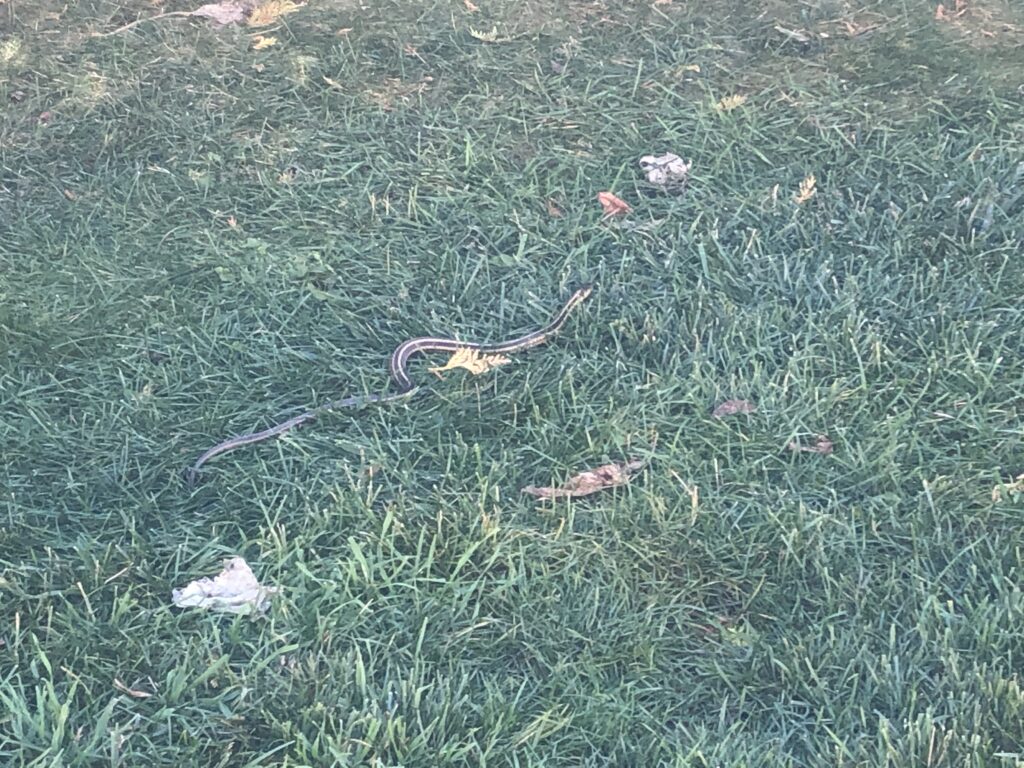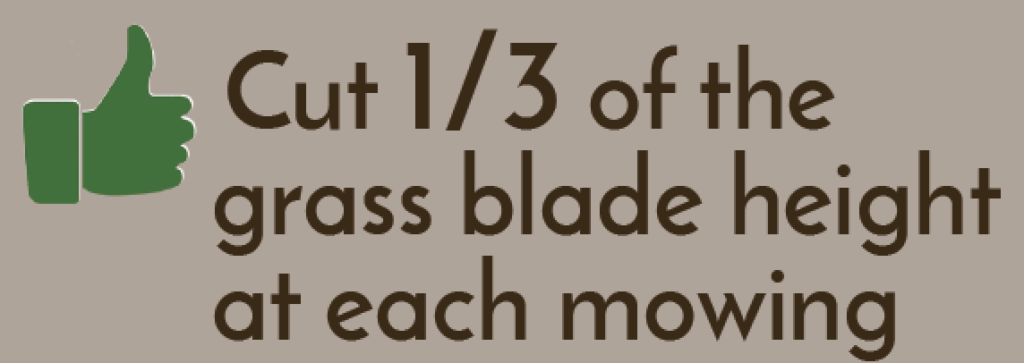
You might recall from when Mo’s blog began that as the Lawn to Lake team was planning its outreach focused on promoting healthy soils (that ultimately became the #RaiseTheBlade outreach campaign), we surveyed landowners in the Lake Champlain basin about their lawn mowing practices. One of the questions we asked allowed respondents to share barriers they faced to cutting grass to 3″. In the next few weeks, as the mowing season winds down, Mo’s blog will address some of those barriers.
Today, we’ll tackle what turned out to be an easy barrier to address. Someone responded to the survey and indicated they cut their grass shorter than 3″ because their spouse believes that long grass hides snakes.
While very long grass can hide snakes, luckily, grass that is cut to 3″ isn’t so long that snakes are easily hidden. Recall that another part of the #RaiseTheBlade guidance is that only 1/3 of the length of the grass blades should be cut during any one mowing. That means that the longest your grass should grow is to about 4″ and then you should cut it back to 3″. This promotes rapid decomposition of the cut blades by soil microbes and swift nutrient cycling back to the grass. If you are able to follow this best practice (like Mo does), your grass won’t grow to such lengths as you might see in an un-grazed pasture, and as a result, snakes should be fairly easily observed if present.

Giving further credence to this concept, just last week, while sitting on our patio, I observed something lying in the grass about 10 feet (3 meters) from where I was sitting. I asked my husband, “Is that a snake?” Expecting him to say no, and to share with me what it was he had placed on the lawn, I was surprised when he answered, “Yes.” Upon hearing his positive response, I grabbed my phone to try to capture a photo of the snake. This proved challenging as my movement alerted the snake that it had been spotted, and it was moving away from the area as quickly as possible to find shelter. The snake we saw (shown above) was the most common snake in this area – the common garter snake.
For those who may be more familiar with poisonous snakes from other regions of the nation or world, another important thing to know about snakes in the Lake Champlain basin (that includes parts of western Vermont, northeastern New York, and southern Quebec) is that there are only 11 kinds of snakes that live here, and most are beneficial and not harmful to us. The Vermont Fish and Wildlife Department website has some valuable information about the various species of snakes that call the Lake Champlain basin home.